There has been much talk lately about the advantages of using a stud sire with lots of different hens. It would be truthful to say that many lofts house great pre-potent cocks capable of siring class quality offspring that win out of turn. It would be a great idea to get as many young from that one cock as possible, all aged to within a week of each other, thus starting life in the young bird section as a team.
This can be quite easily done, and the results can transform your yearly performances dramatically. The number of young obtainable from the stud sire in one round depends on what you wish to put into it. I successfully bred 10 young on my very first attempt, all weaned off together. On my second attempt I used a lot more hens (12) and weaned off a full round of 24 young, all half brother/sisters, all from the one single cock, using no more than an ordinary 12 ft x 8ft stock loft or section. Utilizing 12 hens; It is a good suggestion that the hens to be used have already laid and reared previously. The loft was fitted out with 12 ordinary widowhood nestboxes. (Just about any type of nestbox can be used so long as it is impossible for a cock to get in and tread the hen.)
I then selected on paper the hens in which I wanted to use. The twist here came at this point, as the cocks that were going to be paired to these hens to rear the young as there own would also be the sire’s to the 2nd round of eggs. So when selecting which cock goes to which hen make sure you are thinking ahead, as the 2nd round young will also be (as individuals) half brother/sister to the first round off each hen.
The loft itself should be fitted with an aviary where the cocks can be locked out when the time comes. I fitted a simple 4ft x 2ft wire aviary and tacked an old curtain to the inside that could be dropped and secured with household drawing pins. In the aviary I placed a drinker and grit & mineral pots. So you have your pairings worked out and it is time to introduce the 12 cocks to there nestboxes. It does not matter which box they take, just allow enough time for them to get settled in. It is also a good idea to lock them into the aviary a couple of times to get them used to the idea.
Day 1
On the day you are ready to proceed make sure that the hens have been well fed and watered. It will work a little better if you introduce the hens later rather than earlier in the day. Feed & lock the cocks into the aviary then place the hens in the locked half of the nestboxes of their selected cocks. If the hens are fit and ready to pair they will tell you so without a cock being present. It is a good sign that things will go easy when the hens are very amorous.
With the hens secure in their half of the box allow the cocks into the loft. They perform there usual stuff with plenty of billing between the bars of the partitioned box. There is not a chance that the cock can tread the hen. Leave the birds like this until morning.
Now is a good time for pen and paper, so make sure that you have a clipboard or such in the loft, with the ring numbers and box numbers for all the hens laid out. This will help you re-place the hens into the correct boxes until they are fully versed and keep good records of the days to come.
Day 2, 3 and 4
The first thing that I check as I walk in the loft is that all the hens are still in their boxes, none having escaped previously. This will be the first item on the agenda every morning for the next few days. If any hens have escaped it is not a problem at this stage but you must remedy the situation and prevent it happening again as it is vital to the purpose of your programme. Feed the cocks and lock them in the aviary with their own drinker. Once secure you can allow the hens freedom of the loft to eat and drink, pickstones etc. As each hen returns to a box (hopefully its own) lock her in. When all the hens are back in their boxes let the cocks come back in. you will get a feel for how things are going at this point. The cocks should rush to their boxes spinning and cooing. Repeat this again at some stage of the day, allowing the hens a chance to stretch their wings, eat & drink and find their own box. You can also fit little drinkers to the nestbox if you wish.
Day 5
This is the day to introduce the stud cock. The cock I used was 10 years old and I thought this could be a problem, but it turned out to be quite the opposite. This system can work with a cock that is already paired or sitting but you will get quicker results if he is un-paired.
Feed the cocks and lock them in the aviary. Release the hens to eat & drink etc. Lock all hens back in box. Bring in the stud cock and release him into the loft, he will strut his stuff and the hens will respond from the boxes. Allow the stud cock to roam around, he will fly up to many of the hens introducing himself. They will all respond to his attentions. After 10/15 mins release the hen from the first nest box, in no time at all she will get down for the cock. As soon as the deed is done get the hen back in her nest box and remove the cock. Mark down on your record sheet a note alongside the hens ring number that this occurred. Place the stud cock back in his own section. Rest for 30 mins and repeat with the 2nd hen. No need to allow the stud cock time to get his bearings, just place him in the section and release the next hen. Copulation will be swift, the chances are that all the hens saw the first procedure and are now competing with each other. Remove the stud cock and re-place the hen. Repeat this every 30 mins to cover the first 6 hens. Then give the stud cock a couple of hours rest, re-starting later in the day with the last 6 hens. Don’t forget to mark down each hen in turn. If one of the hens refuses to mate make a note of it as she will be the first one the next day. When all is done make sure all the hens are secure and allow the cocks back into the loft from the aviary, they are none the wiser.
Day 6 and 7
If all went well the previous day, do exactly the same procedure but this time in reverse, starting with the hen that was last the day before. Not forgetting that the hens must be well fed etc. before you commence.
Day 8
Now depending on the hens you are using you could be getting eggs at this stage. If so, I suggest you concentrate on any hen that has not laid as it is my experience that once the hen has laid she will have nothing more to do with the stud cock, (sounds about right!!) Carry on with the procedure until all the hens have laid. But be warned, I have never known a hen that has already laid her 1st egg to allow the stud cock to tread her again, so the theory of 2nd egg fertilization needs looking at.
At this stage I allow all the cocks into the loft (but no contact) whenever possible to see that their hens have laid. As soon as the hen lays her 2nd egg I open the box and allow the cock to enter. Many of them rush in and instantly sit the eggs, no matter what time of day it is. Once all the hens have laid you can treat the section with ordinary everyday management. The cocks will have no problem believing that the eggs are their own and will sit normally. Let them sit 4/5 days and then check the eggs are full. If you find that any are infertile you can check your records to see if there is a reason for this. When I used 12 hens every single egg hatched using just this method, ending up with 24 young birds that all resembled each other in various ways. If you paired up correctly in the first place you will now be able to let these cocks and hens lay a 2nd round in the normal fashion.
I agree this method can take up some time, but the wise amongst you will plan this carefully to fall on a weekend or a holiday. It is well worth the trouble and does not take up any more time in respect of days.
I just had this published in the British Homing World and thought it could be of interest to others.
The Bull System Made Easy by: Nigel Cowood of Gringley Lofts
E-mail: [email protected]

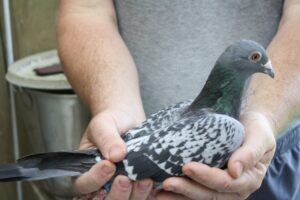
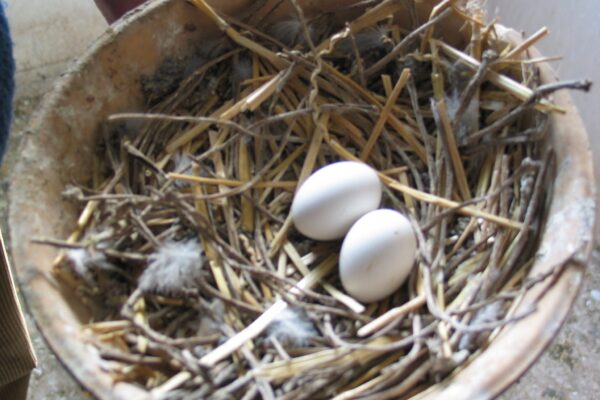


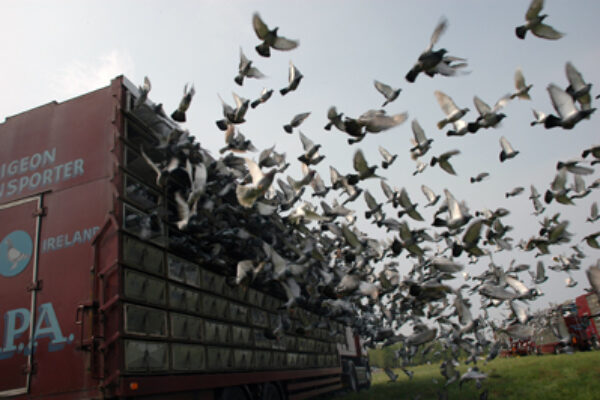
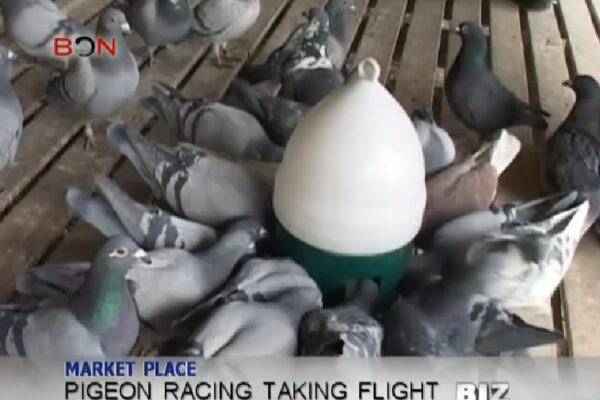
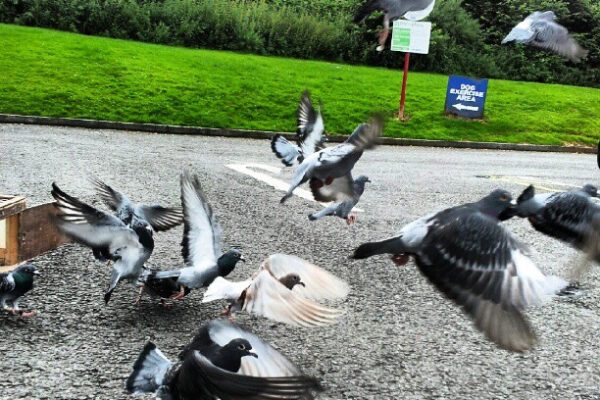


I’m starting back with racing pigeons and I like the idea of the bull system.
I will be trying this
That was a very good article concerning stud using. When the time comes I am going to us my best Racing Cock with 6 hens. I’ll also post the result. I could see this system working and getting better young birds from my breeding periods. Lol a friend of mine has a winning Cock that I should be able to borrow for this system.
Very good article i don’t have that kind of room but you can still use a good cock by using the space
that you have and your numbers would be less of course just move the cock around in the lofts that
you have it works fine and i don’t have room to breed that many off one cock and not try breeding
from his off spring and other pigeons you may want to try.